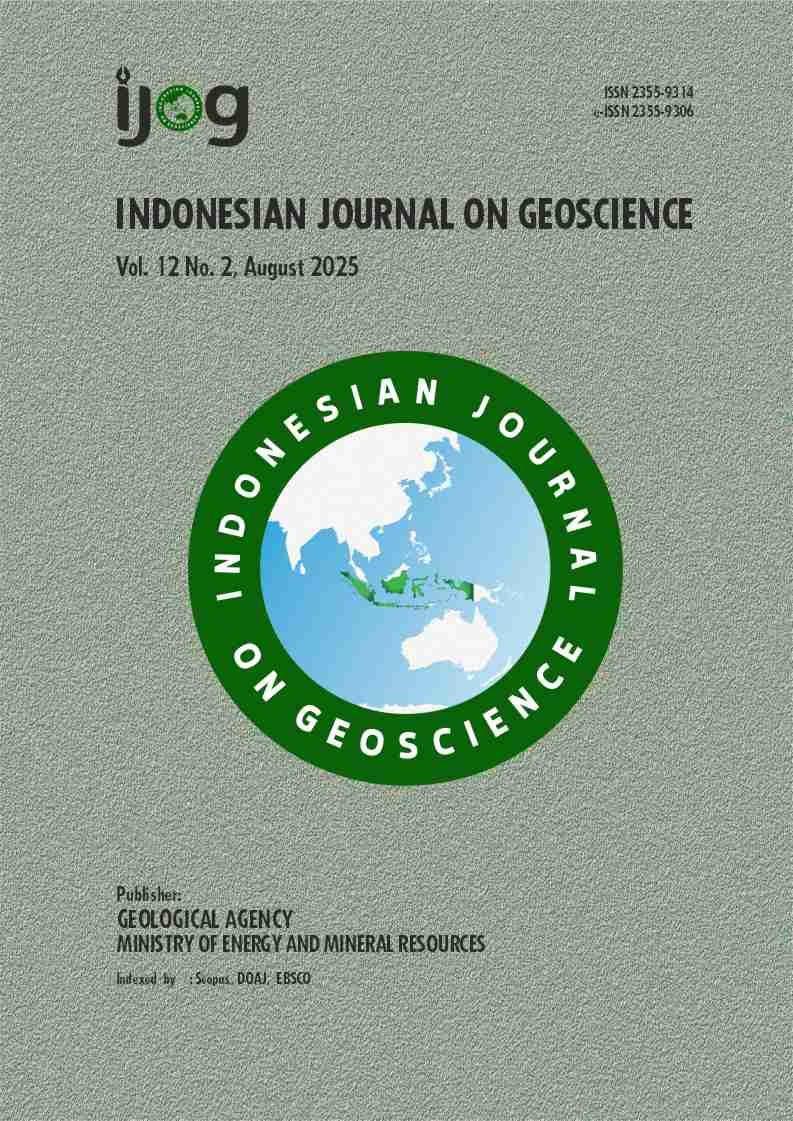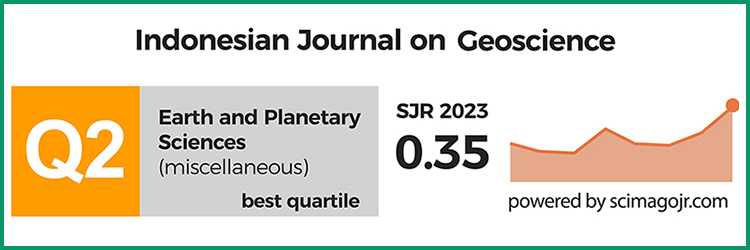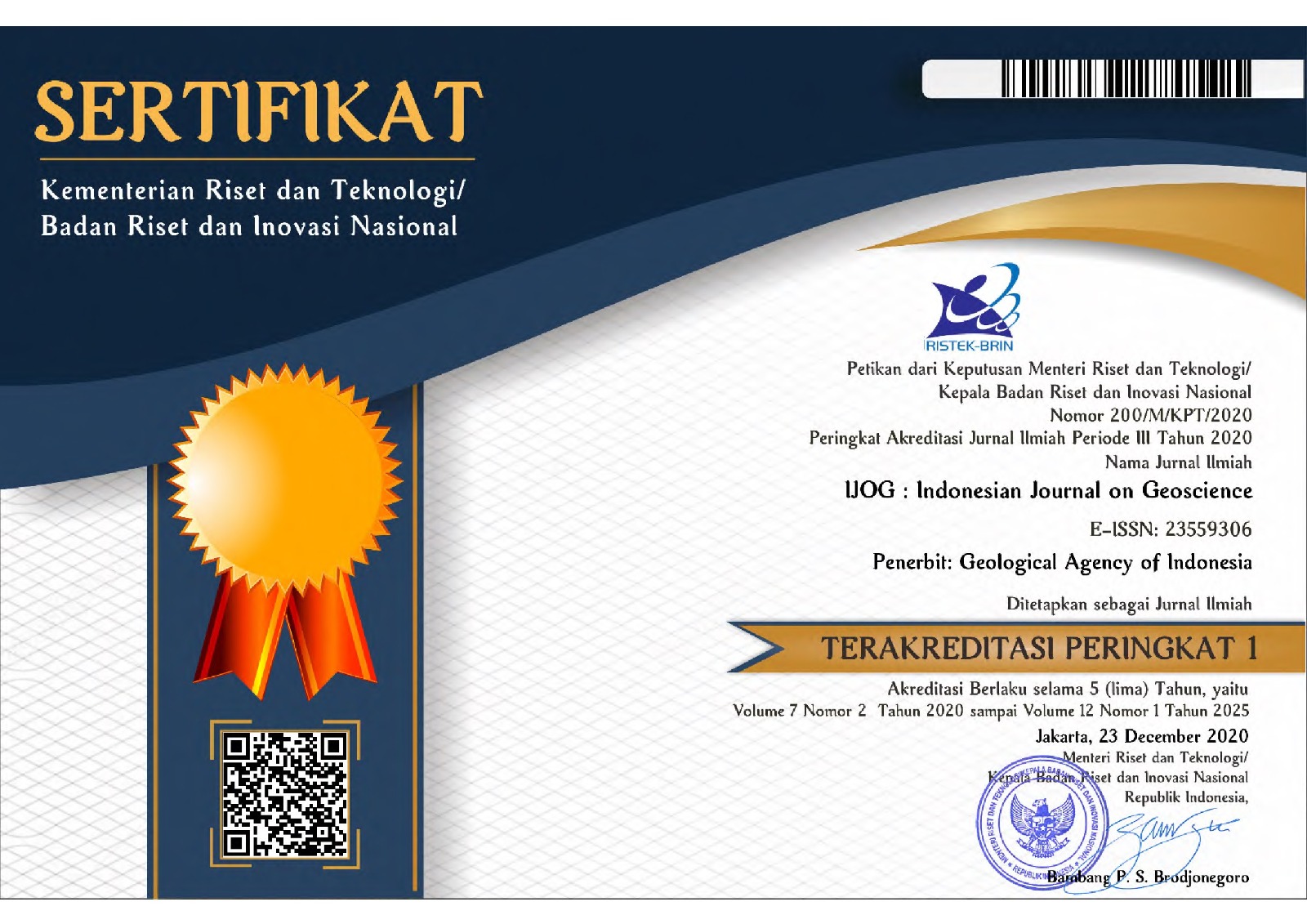Zonality of Gold Ore and Prospects of Gold-Quartz-Sulfur in Khauau Deposit, Binhvan Commune, Chomoi District, Backan Province, Vietnam
DOI:
https://doi.org/10.17014/ijog.12.2.199-215Abstract
Khauau gold deposit, Binhvan commune, Chomoi District, Backan Province, Vietnam, is located in the Dong Bac Bo intracontinental orogenic belt. This is one of the important gold mineralization areas of Vietnam. To study the zonation of mineralization and to predict the prospect of deeply hidden buried gold ore, a research was conducted based on mineral facies analysis, fluid inclusion thermometry, ICP-MS chemistry, and morphological orebody size. The results indicate that the gold mineralization is derived from medium to medium–low temperature hydrothermal fluids associated with deep-seated formations. Inclusion homogenization temperature is from 170 to 310o C, and the main ore mineral components include pyrite, arsenopyrite to a lesser extent galena, sphalerite, and chalcopyrite. Gold mineralization-quartz-sulfur Khauau deposit is divided into three zones, which from the top to the bottom is as follows: ore zone 1 is gold-quartz-pyrite poor sulfur; ore zone 2 is gold-quartz-polymetallic; ore zone 3:is gold-quartz-arsenopyrite and pyrrhotite. Ore bodies are likely located at the depths of 125 to 540 m with many extending beyond 400 m. The depth of ore-forming processes is 562 m and the zoning coefficient of Kz= 0.83. Accordingly, it is possible to predict the prospect of the Khauau gold deposit, Binhvan commune, Chomoi District, Backan Province, to a depth of more than 500 m, and possibly extend to depths of up to 5 km.



















